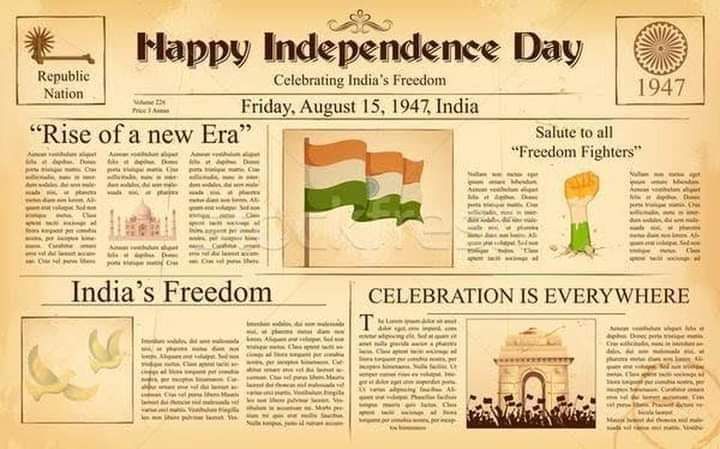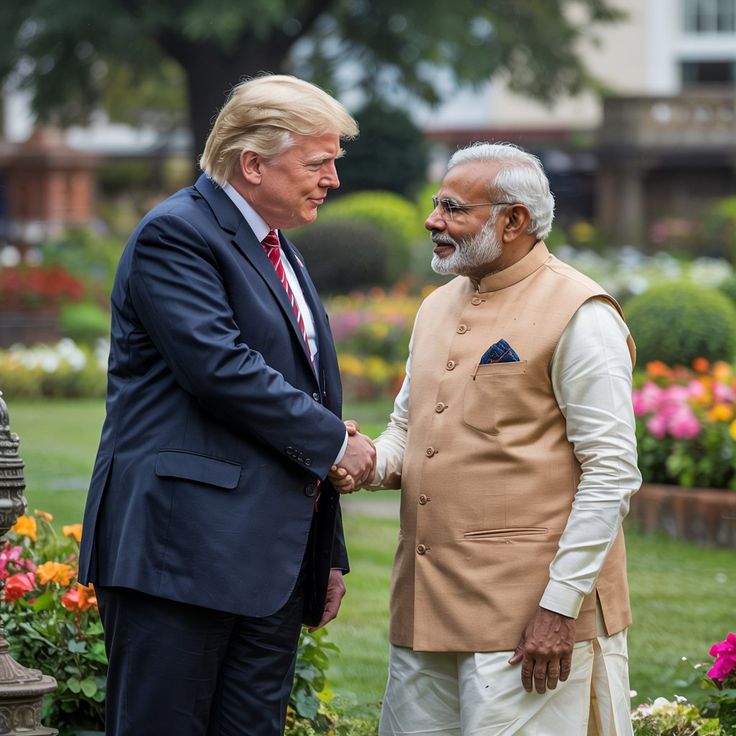As the clock struck midnight on August 14, 1947, India awoke to a new life. The centuries-old British colonial rule had ended, and the air was heavy with emotions — joy, relief, pride, and an undercurrent of uncertainty. On that historic night, a nation of nearly 350 million people stepped into the light of independence, marking the birth of the world’s largest democracy.
The first Independence Day celebrations in 1947 were unlike any that followed. There were no grand military parades or elaborate cultural shows. Instead, the mood across the nation was raw and intense, filled with the fervor of freedom and the solemnity of responsibility.

The Midnight Session of the Constituent Assembly
The heart of the celebrations began in New Delhi at the Constituent Assembly. The nation’s leaders assembled at midnight to see the official handover of power. The Assembly Hall, adorned with flowers and the new tricolour flag, was packed with members, journalists, and guests.
Jawaharlal Nehru, who would soon be sworn in as India’s first Prime Minister, delivered his now-legendary “Tryst with Destiny” speech. In calm yet powerful words, he spoke of the nation’s long struggle, the sacrifices of countless freedom fighters, and the promise of building a just, equal, and prosperous India.
As August 15 rolled around the clock, the hall erupted in cheers. The British Union Jack was lowered, and the Indian national flag was raised in its place — a moment that brought tears to many eyes.
The First Flag Hoisting at Red Fort
While the midnight session was symbolic of political freedom, the morning of August 15 brought the public celebration. Prime Minister Nehru reached Delhi’s Red Fort at about 8:30 a.m.The 17th-century fort, a symbol of India’s rich heritage and resistance, became the venue for the first ceremonial hoisting of the Indian tricolour.
Standing on the ramparts, Nehru unfurled the flag to the cheers of thousands gathered below. The Indian Air Force dispersed petals with planes flying overhead while the crowd sung the national song. The flag, designed by Pingali Venkayya, carried deep meaning — saffron for courage, white for truth, green for prosperity, and the navy-blue Ashoka Chakra for justice and progress.
Celebrations in Delhi Streets
In the streets of Delhi, people danced, sang patriotic songs, and exchanged sweets. The tricolor, which was hand-stitched overnight, was exhibited in houses and shops. Public buildings like Parliament House, India Gate, and Rashtrapati Bhavan were illuminated in the evening.
Yet, the atmosphere was also tinged with tension. Partition had been announced just days before, creating two new nations — India and Pakistan. Millions of people were on the move, crossing borders amid violence and chaos. In Delhi, the joy of freedom was interwoven with the reality of refugee camps, loss, and displacement.
Across the Country: A Shared Joy
From the Himalayan valleys to the coastal towns, the spirit of Independence Day spread across the land.
In Bombay (now Mumbai): People gathered at the Gateway of India, singing “Vande Mataram” and “Saare Jahan Se Achha.” Trams and buses were decorated with flowers and flags.
In Calcutta (now Kolkata): Processions marched through the streets, carrying portraits of Mahatma Gandhi and chanting slogans of freedom.
In Madras (now Chennai): Schools and colleges held flag-hoisting ceremonies, and students delivered speeches on the meaning of freedom.
In Villages: Though far from the political epicentres, rural communities lit lamps, rang temple bells, and beat drums to mark the occasion.
Gandhi’s Quiet Day
While political leaders and the public celebrated in Delhi, Mahatma Gandhi spent the day in Calcutta, amid communal riots triggered by Partition. He chose not to participate in the official festivities, believing his duty was to promote peace and unity in those troubled times. Gandhi observed August 15 with fasting and prayer, visiting riot-affected areas and urging Hindus and Muslims to live in harmony.
The First National Holiday
For the first time in modern history, August 15 was a national holiday. Government offices, schools, and businesses closed, allowing citizens to participate in celebrations. Radio broadcasts carried speeches, patriotic songs, and messages from leaders. Newspapers the next morning were filled with photographs of flag hoistings and jubilant crowds.
The All India Radio’s coverage of Nehru’s midnight speech reached millions, even in remote areas. For many, hearing the Prime Minister’s voice on the radio was a powerful reminder that India’s governance was now in Indian hands.
Symbols of Freedom
Each component of the original Independence Day had symbolic significance:
The Tricolour: No longer a banned flag, it became the nation’s pride.
The National Anthem: Though officially adopted later in 1950, “Jana Gana Mana” was widely sung that day.
Public Gatherings: These demonstrated unity, despite the vast diversity of languages, religions, and regions.
Raising the flag itself was a powerfully emotional act that demonstrated India’s independence, self-determination, and readiness to shape its own future.

The Shadow of Partition
While freedom was sweet, the first Independence Day could not escape the bitter realities of Partition. Communal violence had erupted in Punjab, Bengal, and parts of Delhi. Families were torn apart, trains arrived full of refugees, and relief camps were set up to house the displaced.
Yet, even amid tragedy, people clung to the hope that independence would bring stability and a better future. Leaders urged citizens to focus on rebuilding the nation, protecting its unity, and upholding democratic values.
Legacy of the First Celebration
The Independence Day of 1947 remains etched in India’s collective memory as a moment of triumph and transformation. It was the day when the dreams of generations — from the Revolt of 1857 to the non-cooperation movements, from the Dandi March to the Quit India movement — finally came true.
Every year since then, August 15 has been marked with official ceremonies, cultural events, and tributes to freedom fighters. But the raw, unfiltered emotions of that first celebration can never be replicated.
A Nation’s New Journey
As the day ended on August 15, 1947, India was a free but divided land. The challenges ahead were immense — drafting a constitution, integrating princely states, building an economy, and healing wounds of partition.
Yet, the first Independence Day had given the nation something priceless: a sense of ownership, dignity, and the belief that Indians could govern themselves.
Today, decades later, the images of Nehru unfurling the tricolour at Red Fort and the midnight pledge of “freedom and responsibility” still inspire millions. The story of that day is not just a chapter in history books; it is a reminder of the sacrifices made and the values worth protecting.
In the words of Nehru on that midnight of August 14–15, 1947:
“India will awaken to freedom and life at the stroke of midnight, when the rest of the world is asleep.”
Those words, and the celebrations that followed, marked not just the end of British rule — but the beginning of India’s journey as a sovereign nation.


